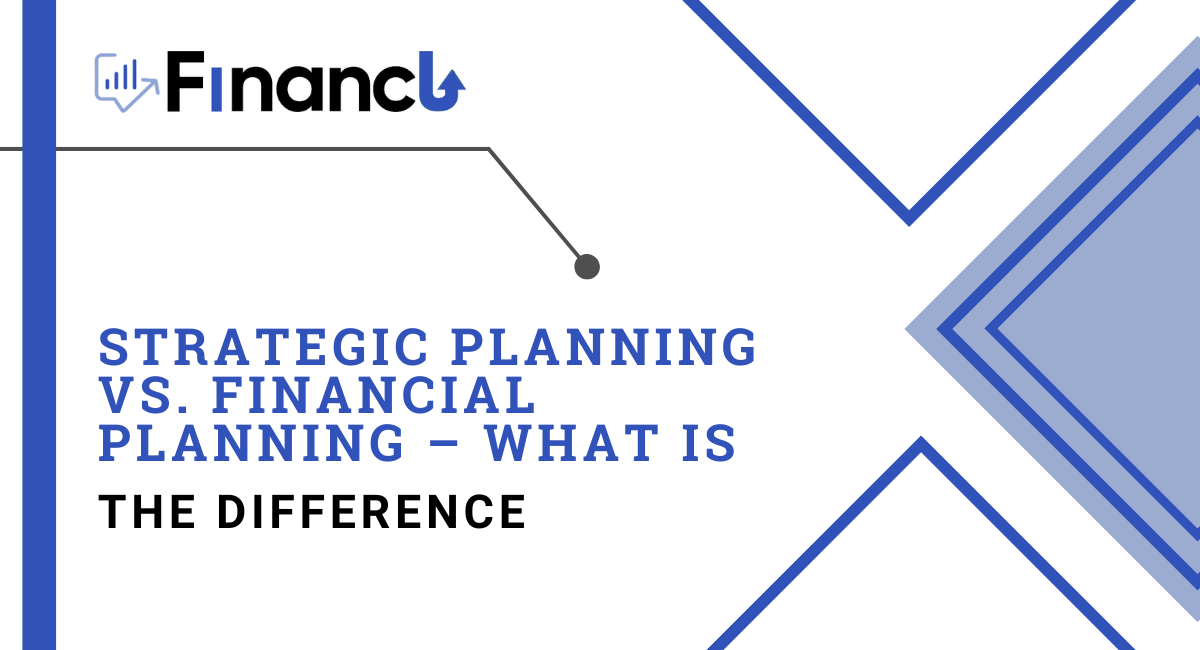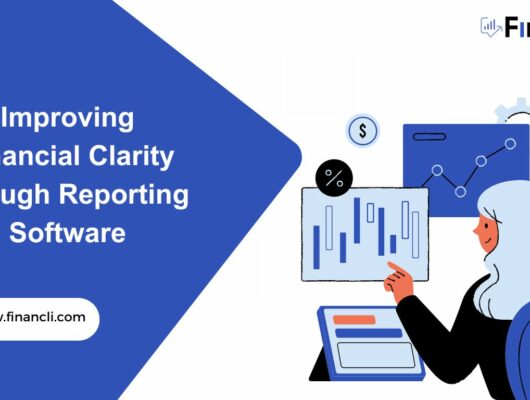Strategic and financial planning are two very different processes that work together to help organizations achieve their goals. Strategic planning aims to develop a vision for an organization’s future and guide its decision-making process. The purpose of financial planning is to understand how your organization will operate financially over time so that you can effectively manage resources while achieving those objectives.
Let’s do an all-inclusive analysis of what these two terms possess.
What is Strategic Planning?
Strategic planning is a process that leads organizations to clarify their mission and goals, set priorities, and make decisions. It’s used to help an organization understand its environment and develop strategies to meet its goals. Strategic plans can be created at any level of an organization—from the CEO down to individual employees—and they often focus on areas such as human resources (HR), marketing & sales (M&S), finance & accounting (F&A), information technology (IT) or general management.
Strategic planning is not just about getting things done; it’s about creating an environment where everyone works together toward common goals. So as you read this article in your company handbook or prepare for your next strategic planning meeting, remember these three things:
- A strategic plan is a piece that formulates the overall agenda of an organization. It can be a single page or a full-fledged document, depending on the structure of the business and its goals. The motive of the strategic plan is to define what you are destined to do, where you want to reach, and what your plan will be.
- Strategic plans are rarely created in isolation; instead, they should be part of your company’s overall strategy and aligned with other essential elements, such as marketing policies or financial forecasts. The best way for companies newbies (like us!) who don’t necessarily have experience writing these documents is to do due diligence before diving into their first attempt at creating one!
- Strategic planning considers internal strengths and weaknesses, external opportunities, and threats. Finally, it describes the desired future position of the organization and how it will get there.
What is Financial Planning?
Financial planning is examining an organization’s financial position and determining how best to achieve its objectives. It can be a critical step in planning for any business, large or small, government agency or non-profit organization.
It involves creating a strategy for achieving future goals and managing risk and uncertainty by examining your current situation, assessing where you’re going with your business (or other organization), identifying opportunities for growth/improvement within that direction, and then projecting out into the future based on what’s known now (including assumptions about things like revenue or expenses).
An organization must have a clearly defined financial strategy to achieve its objectives. This means developing an understanding of the financial implications of all strategic decisions. The finance function links an organization’s strategy and financial performance, translating strategists’ goals into financial objectives via the budgeting process.
In addition to providing information about how budgets should be prepared and approved for them to be effective, this role also includes the following:
- Guiding developing budgets based on mission statements/strategies/goals;
- Generating detailed reports on budgeted costs;
- Creating forecasts for future cash flows from sales activities or other sources (e.g., grants);
- Preparing annual reports highlighting key statistics such as profit margins or ROI data explicitly related to specific projects undertaken by various departments within your business unit(s).
Simply put, strategic planning is a process that helps you to decide where you want to go, and financial planning is the process of getting there. Strategic planning and financial planning are linked together. Let’s explore their differences:
Basic Difference
“Thinking before action” is what planning entails. It determines what, when, and how the task will be completed. It is not the same as strategy, which is mere “an all-inclusive proposal.” The strategy is all about adopting a technique to achieve success in a specific goal. It is the ability to manage the business’s affairs. Many times in business, the terms planning and strategy are used interchangeably.
Planning is the fundamental function of management that attempts to see into the future. On the other hand, strategy is a component of planning and is also known as structural planning. In the business world, the two terms have different meanings and applications.
Application in Business
Businesses needs to plan their financial future and look at how they can turn ideas into reality. Strategic planning is creating long-term goals and identifying how to achieve them. It provides a structured way of addressing present challenges and thinking about the future.
Setting Goals
Financial planning is essential for all businesses, whether large or small. It involves forecasting income and expenditure, setting financial targets, and monitoring performance against targets. In addition, financial planning can help to ensure that the business has adequate cash flow to meet its commitments at all times and prepare budgets that allocate sufficient funds for priority activities such as investment in equipment.
On the other hand, strategic planning focuses on long-term goals and provides a structured way of addressing the challenges in the present time and thinking about what the future may hold.
Goals Evaluation
Because long-term planning spans a long period, your company’s strategic financial management will almost certainly evolve. If your results fall short of or exceed your goals by a significant margin, it’s time to examine the strategic variance or the specific amount you miscalculated.
If there is a significant difference, determine whether it is due to faulty assumptions and accounting or unforeseen circumstances. If it is the former, you can examine your assumptions or figures more closely and recalculate in light of what you have discovered. If the discrepancy is due to the latter, you must recalculate to account for the new circumstances.
Big Picture vs. Small Picture
Strategic planning is looking at your organization over the next five years with an eye on the big picture. It’s about setting goals and objectives that will lead to future profitability for your business and figuring out where you want to be in three, five, or ten years.
Financial planning is more focused on the short-term financial needs of your business now – how much money do I need this month? What will I pay my staff? How much will this cost me? Financial planning looks at these questions in detail but only sometimes includes long-term thinking like strategic planning.
Ideas into Reality
Strategic plans focus on how to turn ideas into reality. Some of these ideas might be hugely profitable, but others may need to make more money. For this reason, strategic planning should always precede financial planning.
Strategic planning precedes Financial Planning because it helps you identify what you want your business to accomplish in the next few years. Financial Planning focuses on evaluating current performance and projecting future results based on past data points from similar companies within your industry sector (or niche).
Simply put, strategic planning looks at where you want your business to be in 3-5 years, whereas financial planning looks at what returns you can expect from your strategy regarding profit/loss and cash flow.
Impact of Execution
A good strategic plan articulates an organization’s purpose, business model, product/service offerings, business goals, and priorities over a specific planning period. A strategic plan can be as simple as a single entrepreneur brainstorming business ideas on the back of a napkin or as complex as a large multinational corporation embarking on a six-month intricate process.
In whatever form, a strategic plan is essential for aligning and communicating an organization’s purpose and setting its direction. Furthermore, the process itself can be an effective team-building and collaboration exercise. However, the most significant impact of a strategic plan is when it is embraced and implemented with discipline by various functional areas.
On the other hand, financial plans chart a course and define an organization’s financial objectives. Sound financial plans are developed with cross-functional input and tested in various scenarios. The financial plan is heavily emphasized because it is the primary measure of an organization’s performance and the basis for management bonuses and payouts. As a result, actual vs. planned performance is closely monitored, and FP&A professionals have well-established financial planning and tracking processes.
Conclusion
Strategic and Financial Planning are essential pillars of an organization’s foundations. Strategic planning allows you to see a more comprehensive picture, while financial planning regulates your organization’s spending. It’s important to remember that business success is not a one-way street. To ensure that you are achieving your goals, it’s crucial that both strategic and financial planning take place simultaneously. This way, you can ensure that everything is on track before committing resources to something new or risky.






